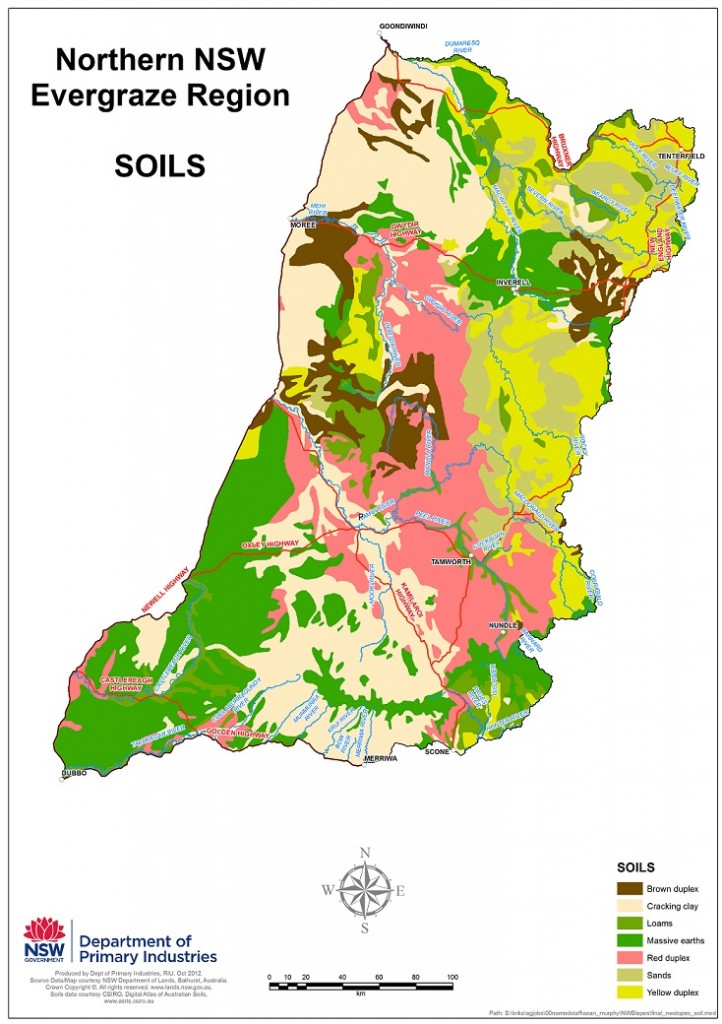North West Slopes NSW – Soils
Soils of the Northern NSW EverGraze Region are highly variable and development of the soils is strongly related not only to parent material and topography, but also climatic conditions and weathering. Nonetheless, there is a marked similarity between the distribution of the soils and the underlying parent materials or the colluvium and alluvium derived from them.
Soils on the Northern Tablelands are dominated by yellow duplex (Chromosols) and sandy soils (Podosols) and massive earths (Ferrosols) associated with granite and basalt outcrops at higher elevations in the east of the region and tend to be highly leached and acidic.
On the North-West Slopes, soils are dominated by red and brown duplex (Chromosols) with lighter texture surface soils overlying medium to heavy clay subsoils. These soils are associated with underlying sedimentary geology of folded beds of inclined shales, sandstones, greywackes and conglomerates.
At lower elevations in the drier, more western part of the region, large areas of black, brown and grey clacking clays (Vertosols), which shrink and swell upon drying and wetting, occupy the alluvial plains and lower drainage lines. These have neutral to alkaline B horizons, with heavy textured soils often having free calcium carbonate or gypsum concretions
Red-brown massive earths (Ferrosols) in the south and west part of the region tend to be associated with volcanics of the Warrumbungle formation.


